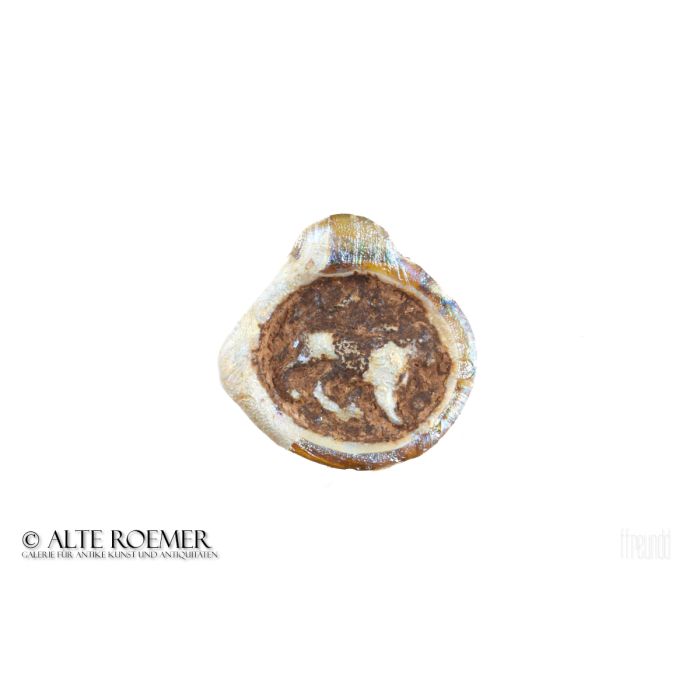Byzantine glass pendant from Judaea
€185
available
Object number
AR3462B
| Object: |
Early Byzantine glass pendant from Judaea
|
| Material: |
Yellow-greenish glass with a nice, iridescent patina.
|
| Period: |
Late 4th to 5th century AD. Early Byzantine period. Late antiquity. |
| Description: |
Glass pendant consisting of a glass disc with rounded edge and attached loop. The motif was stamped into the glass disc. It shows a standing four-legged animal facing right. It is probably a rare depiction of an ibex and not the common motif of a lion. There is a star above the back.
|
| Background: |
Such pendants were worn to bring good fortune or ward off evil. Popular decorations were gods, animals or apotropaic symbols like the head of Medusa. Interestingly, the iconography can dwell on classical Roman themes, but also on biblical, Jewish and Christian themes. It was a fashion shared by all in the melting pot of Judaea under Byzantine rule. That is the region where archaeological finds of such glass pendants cumulate. The ancient workshops making these pendants must have been there as well, producing mainly for the domestic market.
|
| Dimensions: |
20mm high, 19mm wide.
|
| Condition: |
Perfect condition. The surface is covered with an iridescent patina. The motif is difficult to make out in the photos. However, if you hold the piece in your hand and turn it in the light, the motif can be identified.
|
| Provenance: |
Acquired by us in 2022 from R. Deutsch, Israel. Exported under Israel Antiquities Authority (IAA) permit no. 50984. Previously in the Israeli family collection of art dealer Gideon Sasson. Incorporated into the collection in 1925.
|
| References: |
Cf. D. Whitehouse, Roman Glass in The Corning Museum of Glass, Volume Three, p. 21, no. 891. Cf. Metropolitan Museum of Art, acc. no. 15.43.201. |
| Literature: |
A short treatise and a large cross-section of almost 100 variants of these glass medallions can be found in D. Whitehouse, Roman Glass in The Corning Museum of Glass, Volume Three, p. 13ff. We base our dating on the system of Barag (2001) cited therein, which replaces the older system by Zouhdi (1978).
|
| Authenticity: |
We unconditionally guarantee the authenticity of every artefact, all items are subject to our lifetime return policy on authenticity.
|


